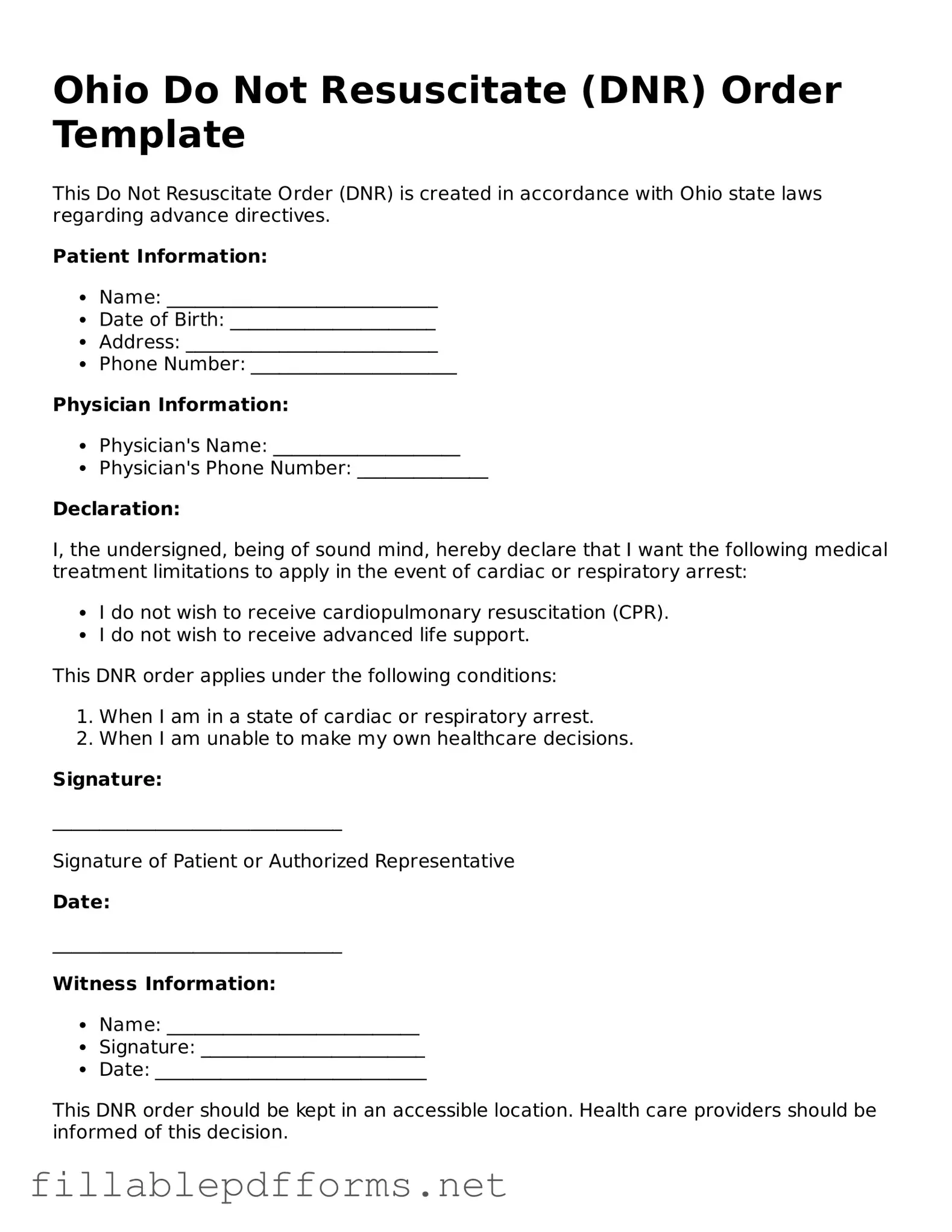Attorney-Verified Do Not Resuscitate Order Form for Ohio State
The Ohio Do Not Resuscitate Order form is a legal document that allows individuals to refuse resuscitation efforts in the event of cardiac or respiratory arrest. This form ensures that a person's wishes regarding life-saving measures are respected by medical personnel. Understanding this form is essential for anyone considering their end-of-life care options.
Launch Editor Here
